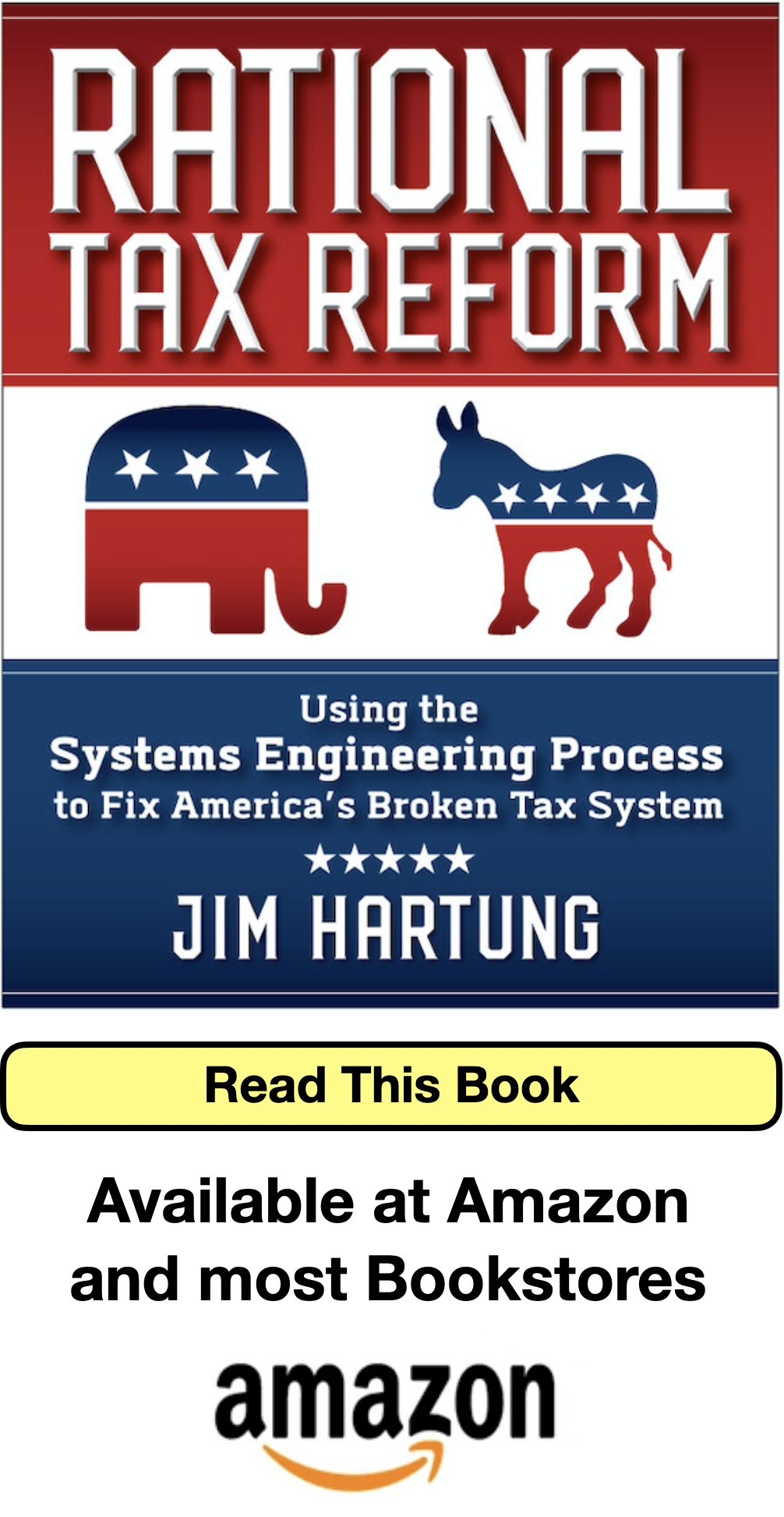Question 8
Question 8: What types of problems can Congress and the president address using the systems engineering (SE) process?
Answer: SE can help Congress and the president address America’s most difficult problems such as our failing healthcare, education, immigration, and criminal justice systems; economic and social inequality; climate change and environmental sustainability; the risk of wars (including nuclear war) and terrorism; and our flawed governance processes.
Additional Information: Following is my list of America’s twelve most serious societal problems. I think SE can help Congress and the president address all of these problems.
1. Health care: The goal of health care reform should be to improve health care, reduce cost, and provide universal coverage. Health care reform should address all health care issues, including mental health, drug abuse, reproductive health care, abortion, and end-of-life decisions. Medicare Choice (as proposed in Rational Tax Reform) can be the starting point for developing comprehensive health care reform.
2. Wars and terrorism: A global strategy is needed to reduce wars and terrorism, including (and especially) the risk of nuclear war. This is an immense challenge, since history suggests that violence is ingrained in human nature. Nevertheless, SE could provide a logical framework for global discussions to address this issue.
3. Climate change: This is one of the world’s most serious problems, yet the world has been unable to agree on how to adequately address it. SE can help develop a practical plan to address climate change without damaging the economy. Carbon dividends (as proposed in Rational Tax Reform) can be the starting point for developing a cost-effective, global climate change policy.
4. Economic inequality: Comprehensive reforms are needed to address the root causes and consequences of economic inequality, such as inadequate education, lack of job opportunities, poverty, homelessness, and food insecurity. The proposed tax reform will help reduce economic inequality, but it is only a small step in the right direction.
5. Social inequality: Social inequality is closely linked to economic inequality. Fundamental reform is needed to address the root causes of explicit and implicit discrimination on the basis of race, religion, gender, and other factors.
6. Justice system: We incarcerate too many people for too long, yet there is too much crime and those who serve time are often unprepared to re-enter society when they are released. A key goal of justice system reform should be to address the root causes of crime, violence, incarceration and recidivism.
7. Immigration policy: Immigration reform should consider the needs of all Americans (including recent immigrants), prospective immigrants, and other countries. Immigration policy should protect and enhance culture, identity, freedom, and economic opportunity.
8. Education: America’s education system is great for the brightest and most privileged students. However, it leaves too many students behind. The goal of education reform should be to ensure that all students have an opportunity to receive a good education at an affordable price and learn what they need to know to become good, productive, and happy citizens.
9. Governance policy: America’s governance policies are outdated. They need to be updated to promote good governance and eliminate the root causes of corruption. Reform is especially needed to improve campaign financing, ensure fair elections, and reduce patronage, especially appointments given to campaign donors and lobbyists.
10. International relations: America’s foreign policy is often inconsistent, ineffective, and counterproductive. A coherent long-term vision is needed to guide global governance, globalization, and bilateral and multilateral policy decisions. This vision should consider all stakeholders and integrate political, economic, and security considerations.
11. Environmental sustainability: America enacted landmark reforms in the past few decades to promote clean air and clean water. However, much more remains to be done, both domestically and internationally, to protect the environment. Reform is especially needed to (1) protect the world’s oceans and biodiversity, and (2) use water, soil, and other natural resources sustainably. Environmental sustainability is closely linked to climate change, but climate change should be treated as a separate issue because of its uniqueness and importance.
12. Tax reform: The tax system is a “root cause” of many of America’s most serious economic, social, and political problems. To address these problems, we must eliminate the root cause. This requires fundamental and comprehensive tax reform. The proposed tax reform (described in detail in Rational Tax Reform) can be the starting point for this effort.
You may be thinking that some problems are just too controversial to resolve. However, my experience with systems engineering of complex products is that the SE process can help resolve even controversial, polarizing issues if the following two guidelines are followed:
Define the problem broadly. Each problem should be defined broadly enough to enable development of a “system solution.” For example, many people may support the BBB tax even though it includes features they do not like, if it contains more features they like. The top twelve problems have purposefully been defined broadly, so the most controversial issues (such as abortion and gun control) are embedded in them and can be viewed in a broader context.
Avoid arbitrary deadlines. Some problems take time to develop good solutions. Experience has taught us that when SE fails (for example, when designing an aircraft), it is usually because a deadline forces adoption of a half-baked solution. The SE process should be allowed several iterations to develop a good solution, especially for complex and controversial problems. The key to success is to repeat the first five steps of the SE process as often as needed to develop a good solution, and to continue repeating the first five steps thereafter to continuously improve the solution.


